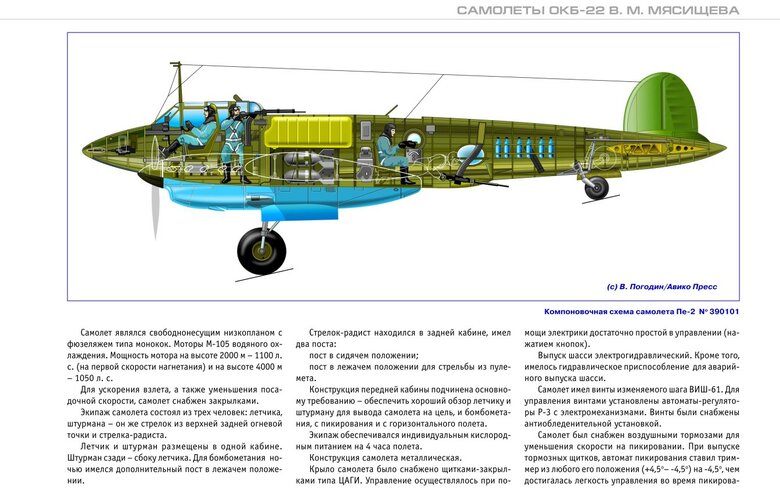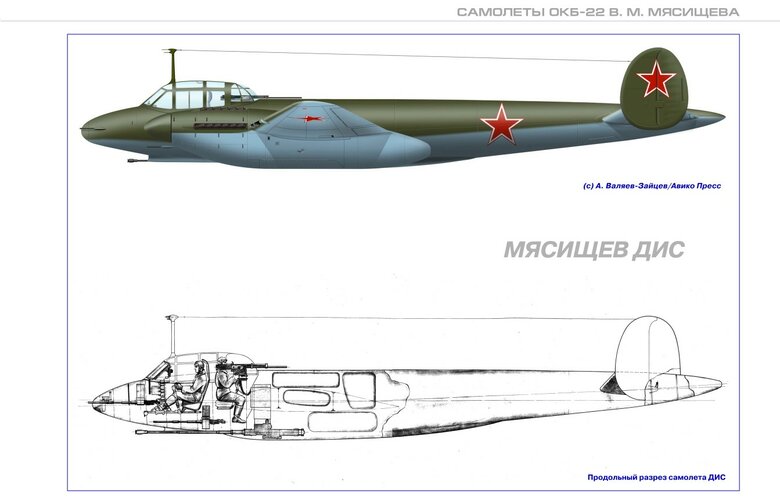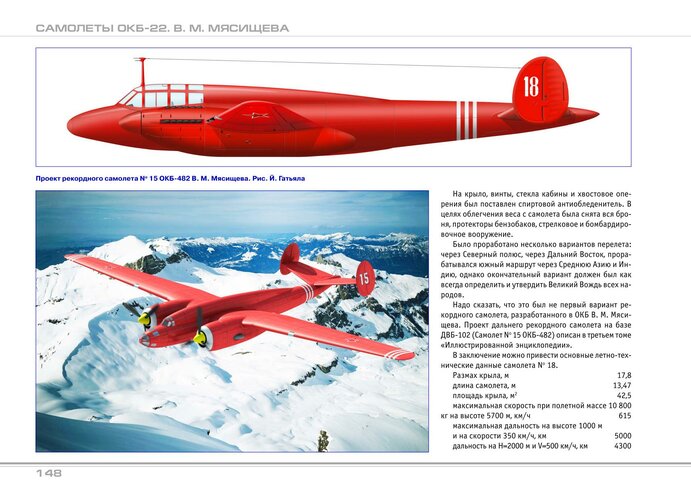athpilot
Fly me to the moon...
- Joined
- 18 November 2012
- Messages
- 406
- Reaction score
- 427
Удалов К. Г., Валяев-Зайцев А. А.: САМОЛЕТЫ ЭМЗ ИМ. В. М. МЯСИЩЕВА ОКБ-22
Москва, 2024 г., 208 с.
УДК. 629. 735. 33. (47+57)
K. Udalov, A. A. Valyaev-Saitsev: Planes of the Myaishchev Design Buro OKB-22
Moscow 2024, 208 pp.
This new book by Konstantin Udalov and Aleksej Valyaev-Saizev outlines the history of the work of the Design Bureau No. 22 of V.M. Myasischev on the development of modifications of the Pe-2 dive bomber and its own developments. So the famous Pe-2 is the center of this book and all the work done by the Buro No. 22 to this whole family of an aircraft.
The Pe-2 was the largest-production bomber in the history of Soviet aircraft construction and the most mass-produced dive-bomber of World War II. It became the third among Soviet combat vehicles (after the Il-2 and Yak-9), in terms of production scale. It is also among the world's top three twin-engined warplanes of World War II, produced in numbers of over 11,000 (Junkers Ju-88, Pe-2 and Vickers Wellington). It is interesting to note that the history of the Pe-2 dive-bomber began with a fighter in December 1939 and ended with a fighter in November 1945. In this regard, all the aeroplanes of this class created in 1939-45 by the Petlyakov-Myasishchev Design Bureau can be divided into three groups:
1st. the high-altitude fighter "100" from 1939,
2nd. the Pe-2 dive bombers No. 39101 in decembre 1940 till the Pe-2B, from the summer of 1944,
3rd. the Pe-2I day dive bombers with 2VK 107A ‘Mosquito’ - 1944, Pe2M, DB108 - 1944, VK-109 - 1945 (significantly different from the production Pe-2 in flight characteristics and aerodynamic layout) and their modification into a DIS fighter (1945).
So, you see, very interestring stuff. I read the whole book on a weekend. (My russian, which I learned 35 years ago in school was good enough to do it; or deepl came to help).
So the book starts with the heavy two engined high-altitude fighters VI-100 and VI-1 (pp. 22-47; see attached table of contents). Next in line aret the Pe-2M1 and Pe-2B (pp. 48-63). The following chapters are dedicated to the Pe-2B (pp. 56-63), the Dive Bombers Pe-2D (pp. 64-69) and Pe-2S (No. 10/231) (pp. 70-79). Next up is the Pe-2s powered by the Ash-82 engine (pp. 98-105). The next chapters are dedicated to the long range heavy escort fighters Pe-2F3 and Pe-3M (pp. 106-121). Next up are the efforts of the Myasishchev OKB to enhance the Pe-2 overall design: faster, higher, more armour. Here we see the Pe-2K, the Pe-2I "Moskito" (pp. 111-128). The most interesting parts of this book are the chapters about the planes with the new engines (Vk-107, VK-108 and VK-109) and their design-history (pp. 150-204). Especially the long range heavy fighter "DIS" (pp. 150-160) and the long range fast bomber with the VK-108 engine (pp. 172-185) are true design masterpieces.
This book is a real treasure trove. I wish everyone a good reading!
Москва, 2024 г., 208 с.
УДК. 629. 735. 33. (47+57)
K. Udalov, A. A. Valyaev-Saitsev: Planes of the Myaishchev Design Buro OKB-22
Moscow 2024, 208 pp.
This new book by Konstantin Udalov and Aleksej Valyaev-Saizev outlines the history of the work of the Design Bureau No. 22 of V.M. Myasischev on the development of modifications of the Pe-2 dive bomber and its own developments. So the famous Pe-2 is the center of this book and all the work done by the Buro No. 22 to this whole family of an aircraft.
The Pe-2 was the largest-production bomber in the history of Soviet aircraft construction and the most mass-produced dive-bomber of World War II. It became the third among Soviet combat vehicles (after the Il-2 and Yak-9), in terms of production scale. It is also among the world's top three twin-engined warplanes of World War II, produced in numbers of over 11,000 (Junkers Ju-88, Pe-2 and Vickers Wellington). It is interesting to note that the history of the Pe-2 dive-bomber began with a fighter in December 1939 and ended with a fighter in November 1945. In this regard, all the aeroplanes of this class created in 1939-45 by the Petlyakov-Myasishchev Design Bureau can be divided into three groups:
1st. the high-altitude fighter "100" from 1939,
2nd. the Pe-2 dive bombers No. 39101 in decembre 1940 till the Pe-2B, from the summer of 1944,
3rd. the Pe-2I day dive bombers with 2VK 107A ‘Mosquito’ - 1944, Pe2M, DB108 - 1944, VK-109 - 1945 (significantly different from the production Pe-2 in flight characteristics and aerodynamic layout) and their modification into a DIS fighter (1945).
So, you see, very interestring stuff. I read the whole book on a weekend. (My russian, which I learned 35 years ago in school was good enough to do it; or deepl came to help).
So the book starts with the heavy two engined high-altitude fighters VI-100 and VI-1 (pp. 22-47; see attached table of contents). Next in line aret the Pe-2M1 and Pe-2B (pp. 48-63). The following chapters are dedicated to the Pe-2B (pp. 56-63), the Dive Bombers Pe-2D (pp. 64-69) and Pe-2S (No. 10/231) (pp. 70-79). Next up is the Pe-2s powered by the Ash-82 engine (pp. 98-105). The next chapters are dedicated to the long range heavy escort fighters Pe-2F3 and Pe-3M (pp. 106-121). Next up are the efforts of the Myasishchev OKB to enhance the Pe-2 overall design: faster, higher, more armour. Here we see the Pe-2K, the Pe-2I "Moskito" (pp. 111-128). The most interesting parts of this book are the chapters about the planes with the new engines (Vk-107, VK-108 and VK-109) and their design-history (pp. 150-204). Especially the long range heavy fighter "DIS" (pp. 150-160) and the long range fast bomber with the VK-108 engine (pp. 172-185) are true design masterpieces.
This book is a real treasure trove. I wish everyone a good reading!





